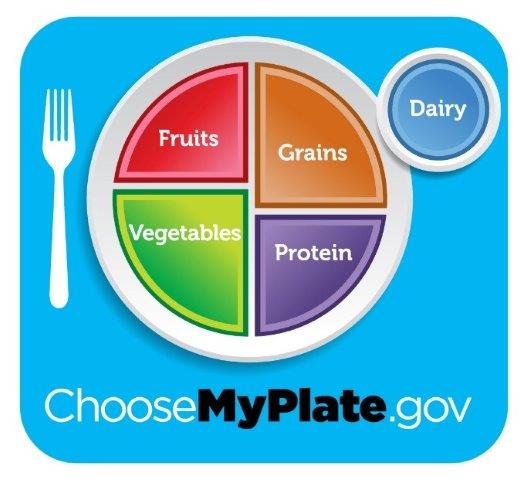Guidelines generally reaffirm role of animal protein in a healthy diet.

The 2020-2025 Dietary Guidelines for Americans, released Dec. 29 by the U.S. Department of Agriculture and the U.S. Department of Health and Human Services (HHS), were widely accepted and welcomed by groups in the animal protein sector.
Updated every five years, the guidelines serve as the foundation for federal nutrition policy and shape the recommendations found on USDA’s MyPlate. They also provides the public with tools needed to make informed decisions regarding food for their families. This edition marks the first time the guidelines provide recommendations by life stage, from birth through adulthood.
The National Pork Board NPB) said the guidelines reaffirm the role of lean pork in a healthy diet and are consistent with the recommendation to include a variety of nutrient-dense proteins. Overall, the guidelines advise people to “follow a healthy dietary pattern” that consists primarily of vegetables, fruits, whole grains, lean meat and poultry, and low-fat dairy or fortified soy alternatives. The guidelines also advise limiting added sugars, saturated fats, sodium and alcoholic drinks and staying within recommended calorie limits.
While fresh pork is respected by the scientific community as a nutritious source of lean protein, it continues to lag behind other proteins when it comes to consumer perceptions of being “good for me and my family” according to NPB, referencing an ongoing Checkoff-funded At Home Meat Tracker. In response, NPB said it is updating its approach to Human Nutrition Research and building a strategic pathway for pork nutrition that capitalizes on the latest research and opportunities that will ultimately help evolve perceptions for pork in a healthy diet and overall nutritional well-being.
The dairy industry also welcomed the new dietary guidelines.
The International Dairy Foods Assn. (IDFA), representing all segments in the U.S. dairy industry, applauded the release of the 2020-2025 Dietary Guidelines for Americans affirming that dairy products maintain their historically important role in federal nutrition recommendations, including recommending most Americans consume three servings of dairy each day.
These new recommendations make dairy foods an important part of a healthy diet for young children from 6 months to 24 months of age. From 12-23 months of age, they recommend “higher fat versions of dairy … compared to patterns for ages two and older,” including whole milk.
The guidelines also make a key recommendation to American adolescents and adults to consume more fat-free and low-fat dairy as part of a healthy diet. Dairy provides 11 essential nutrients; however, as the guidelines note, dairy is an under consumed food category. Increasing consumption of dairy will contribute to meeting recommended intakes of protein, calcium, phosphorous, magnesium and vitamins A and D, according the Dietary Guidelines Advisory Committee. The report points out that about 90% of the U.S. population does not meet dairy recommendations and concludes that, “Individuals should be encouraged to make shifts to increase the intake of vegetables, fruits, beans, whole grains, and dairy to move intakes of these under-consumed dietary components closer to recommendations.”
“The Dietary Guidelines confirm what the overwhelming body of science has been telling us for years—that dairy is one of the most nutritious foods available to people of all ages,” said Michael Dykes, D.V.M., president and CEO of IDFA. “
The federal nutrition guidance affirms the unrivaled nutritional contributions made by dairy foods and reminds Americans that a healthy diet includes three daily servings of dairy. Cow’s milk is a source of 11 essential nutrients and is also a major source of three of the four under-consumed nutrients of public health concern.
“Dairy foods such as milk, cheese and yogurt offer essential nutrients that help nourish people throughout life,” said National Dairy Council (NDC) president Jean Ragalie-Carr, RDN, LDN, FAND. “At a time when affordable nutrition has never been more important to our nation, dairy foods, including lactose-free varieties, are a highly nutritious and accessible option that can help fill important nutrient gaps and support overall well-being. We’re pleased to see dairy consumption recommended for its contributions to healthy dietary patterns based on the scientific evidence.”
NDC noted that consistent evidence demonstrates that a healthy dietary pattern, which includes low-fat and fat-free dairy foods, is associated with beneficial outcomes for all-cause mortality, cardiovascular disease, overweight and obesity, type 2 diabetes, bone health, and certain types of cancer (breast and colorectal).
While the guidelines don’t include recommendations for sustainable food systems, the U.S. dairy community has commitments in place to advance environmental sustainability. Earlier this year, the Innovation Center for U.S. Dairy announced the 2050 Environmental Stewardship Goals, which include achieving carbon neutrality or better, optimizing water usage and improving water quality.
“All foods come with an environmental footprint and all sectors of food production can work to do better, including dairy,” said Krysta Harden, executive vice president of Global Environmental Strategy for Dairy Management Inc. “Today, U.S. dairy contributes about 2% of greenhouse gas emissions and collectively, from farm to retail, we are committed to being an environmental solution and leaving a positive footprint for future generations."
The National Cattlemen's Beef Assn. (NCBA) commended USDA and HHS for finalizing the 2020-2025 Dietary Guidelines for Americans (DGAs) and recognizing the role of lean beef in a healthy diet across all life stages and ages.
While there is no one-size-fits-all diet, “Beef is one of Americans' favorite foods, and science consistently shows lean beef can be the cornerstone in a variety of healthy diets," said NCBA president Marty Smith. "Now more than ever, the key to proper nutrition is giving people practical and realistic advice, to help create balanced diets that work for them – featuring foods they love, like beef, which pairs perfectly with other nutrient-rich foods.”
About the Author(s)
You May Also Like



